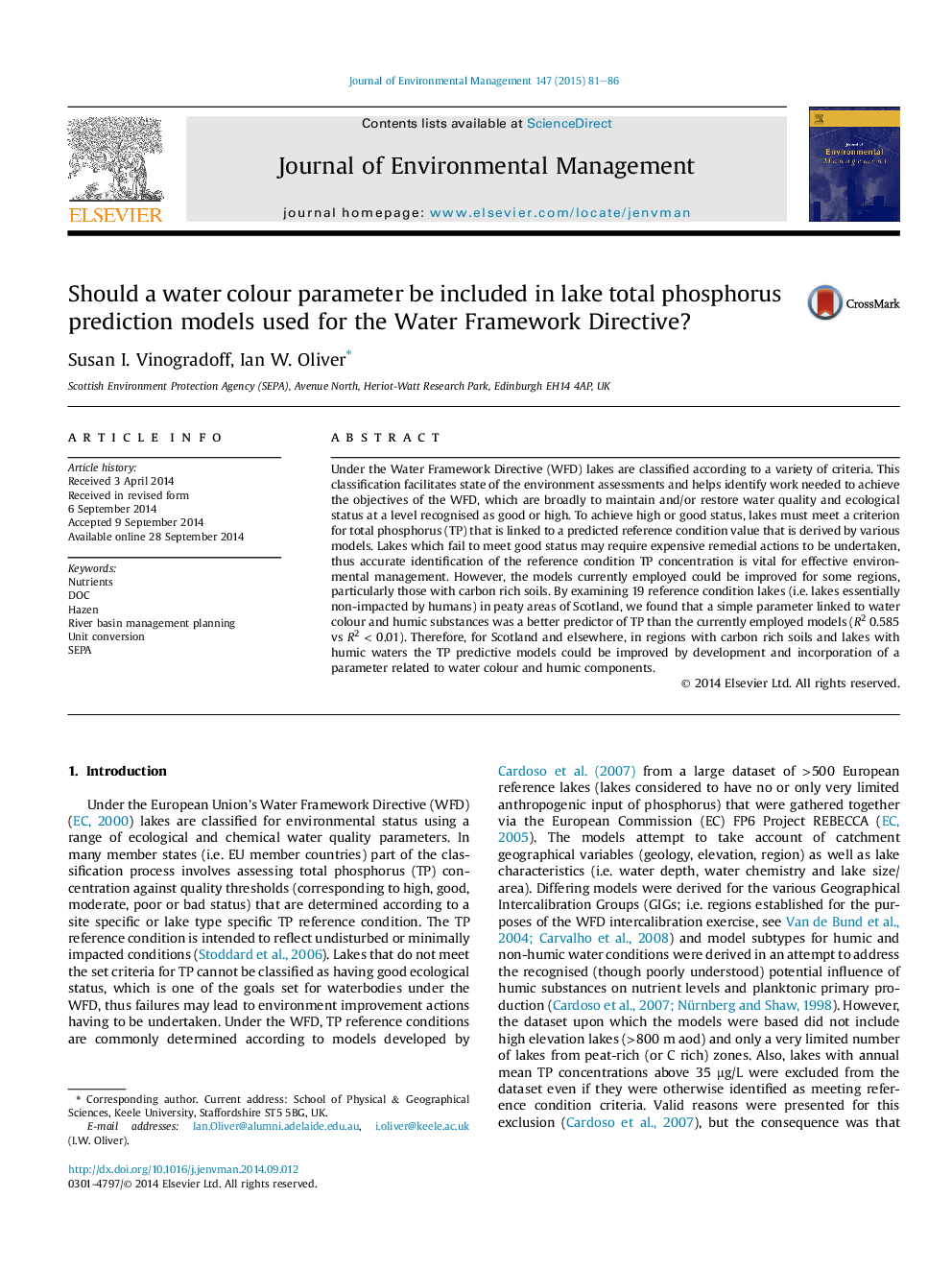| Article ID | Journal | Published Year | Pages | File Type |
|---|---|---|---|---|
| 1055649 | Journal of Environmental Management | 2015 | 6 Pages |
•Phosphorus (P) is an important parameter in lake water quality regulation.•Current P prediction models can have low precision in C-rich areas.•Water colour could be a useful additional parameter to improve model precision.
Under the Water Framework Directive (WFD) lakes are classified according to a variety of criteria. This classification facilitates state of the environment assessments and helps identify work needed to achieve the objectives of the WFD, which are broadly to maintain and/or restore water quality and ecological status at a level recognised as good or high. To achieve high or good status, lakes must meet a criterion for total phosphorus (TP) that is linked to a predicted reference condition value that is derived by various models. Lakes which fail to meet good status may require expensive remedial actions to be undertaken, thus accurate identification of the reference condition TP concentration is vital for effective environmental management. However, the models currently employed could be improved for some regions, particularly those with carbon rich soils. By examining 19 reference condition lakes (i.e. lakes essentially non-impacted by humans) in peaty areas of Scotland, we found that a simple parameter linked to water colour and humic substances was a better predictor of TP than the currently employed models (R2 0.585 vs R2 < 0.01). Therefore, for Scotland and elsewhere, in regions with carbon rich soils and lakes with humic waters the TP predictive models could be improved by development and incorporation of a parameter related to water colour and humic components.
Graphical abstractRelationship between total phosphorus (TP) concentration and lake water colour (R2 = 0.585), highlighting the utility of water colour for predicting TP reference conditions in lakes with high humic contents.Figure optionsDownload full-size imageDownload as PowerPoint slide
